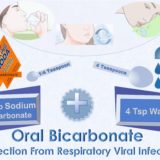Telehealth Reverse Diabetes With Individual Planning For Recovery
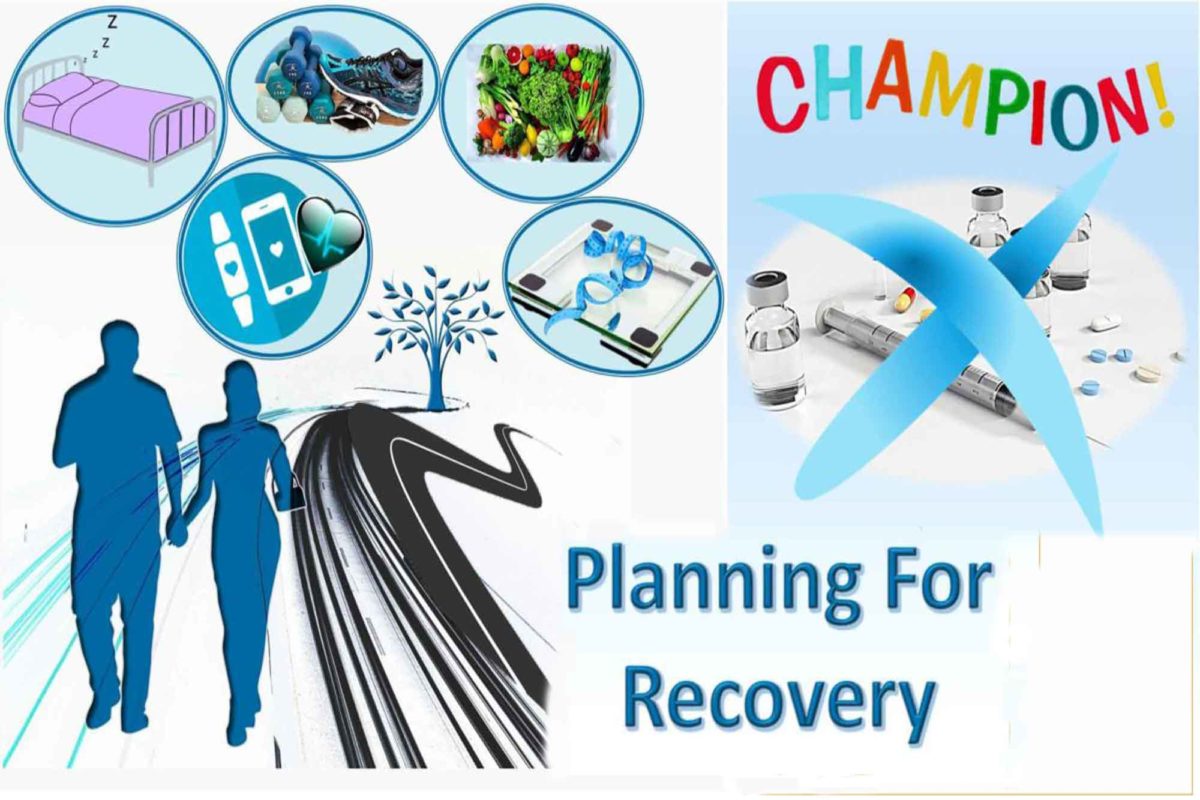
Train your brain to improve your health. What can you do every day for your health? Write it down. Then do it. And keep doing it. Until you don’t even have to think about it.
Power of repetition is the secret to success. Test how much you can do. Keep doing it until you’re good at it. Eventually without even thinking about it. Then add a little bit more.
Make a plan where you’re going so you’ll know when you get there. Tell us your objective and when you’d like to reach it. Get started with something you know you can do. Then we’ll help you measure your progress week by week.
To learn more about programs Herd Healthcare offers, our website is:
www.herdhealthcare.com
At the age of 50, it’s not too late to improve health. Not too late to reduce by half the risk of heart attack, stroke, cancer and dementia. To extend length of life by 10 years. In fact, it’s never too late to reduce abdominal obesity and increase strength with exercise.
Good health improves performance. Reduces heart disease, stroke, cancer and dementia. Decreases costs of living and prolongs life. We absolutely know what works for good health. Keeping weight down and strength up.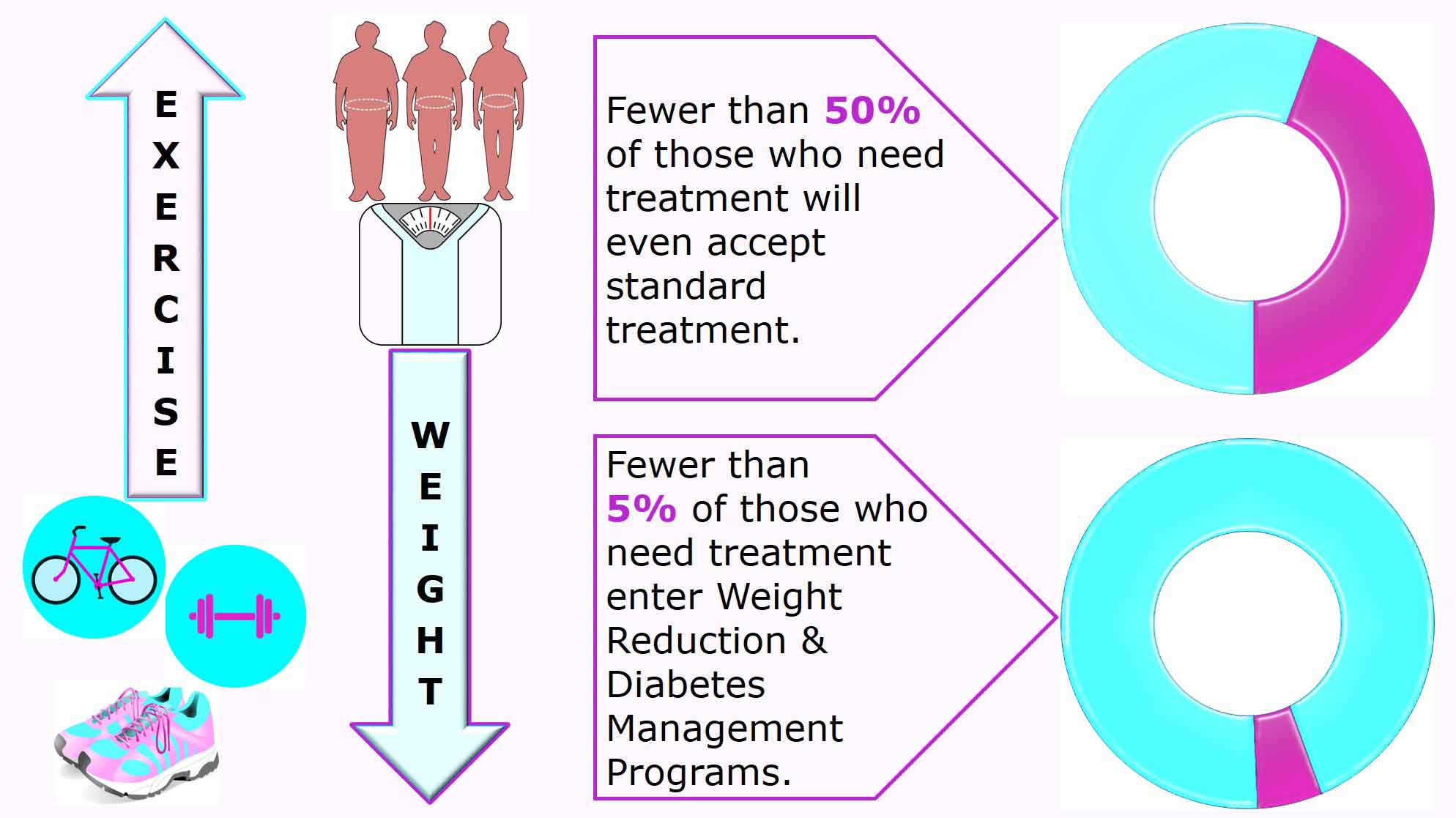
It’s more complicated to show the benefits of reducing weight and increasing exercise. Fewer than half of those who need treatment will even accept standard treatment. Fewer than 5% or those who need treatment even enter Weight Reduction and Diabetes Management programs.
When treatment is fully accepted, it works very well. About 20 years ago, in the US, 5,000 men and women, age 60 years with obesity and type 2 diabetes were treated and studied for about 10 years. Half of them were entered into a standard Diabetes Education and Self-Management Program. The other half were entered into more Intensive Programs. For the difference in treatment, each intensively treated subject received education, counselling and support that cost about $2,000 more than it cost for those in the Standard Program. Just for the first year of the study.
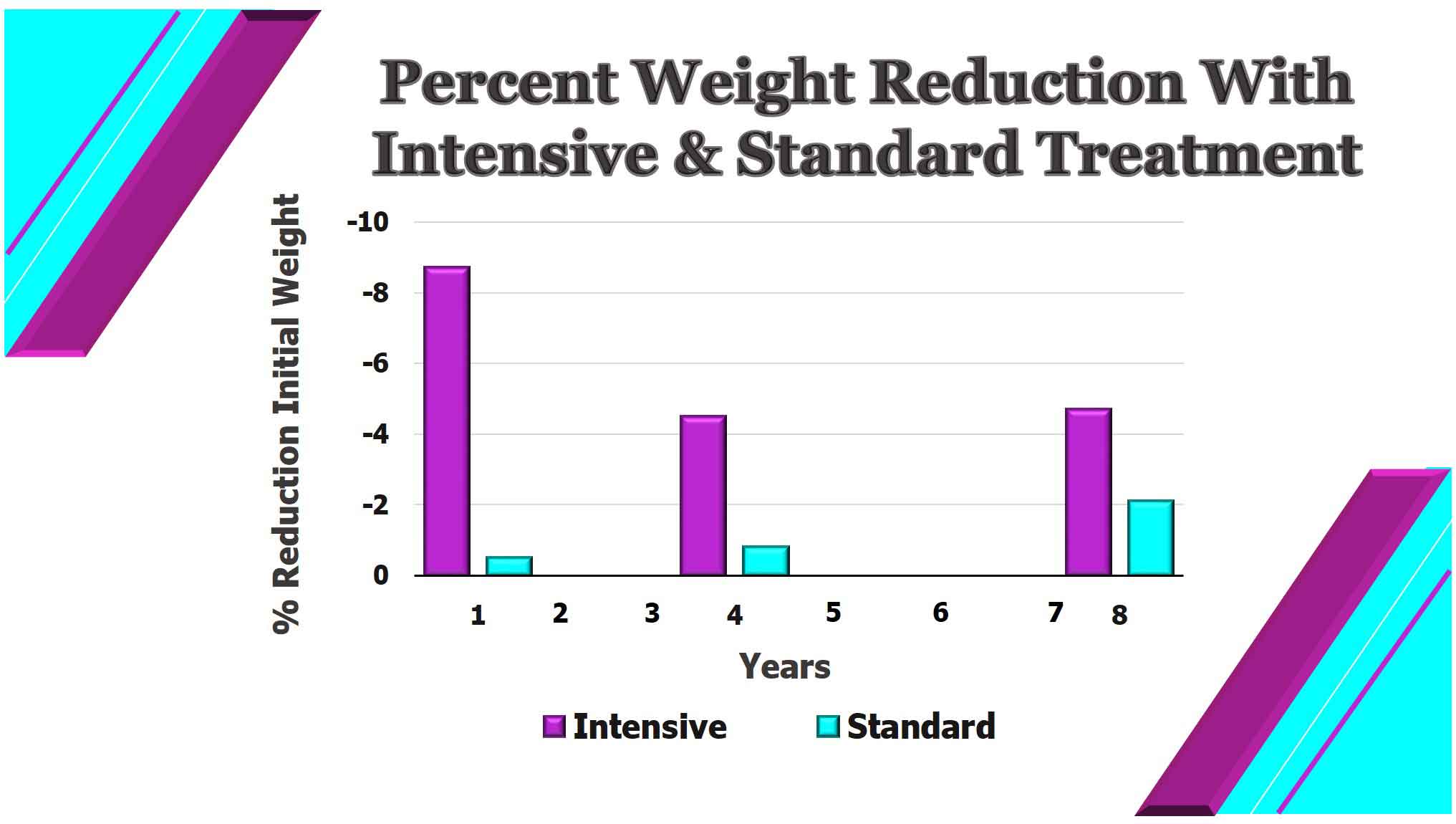
After the first year in the study, the group receiving Standard treatment lost about -1% body weight and the group receiving Intensive treatment lost about -9%. After 4 years, the Standard group had lost about -1% and the Intensive group lost -5%. After 8 years, the Standard group had lost about -2% and the Intensive group maintained about -5% average of weight lost.
A striking feature of both programs is the spread of effectiveness amongst all the subjects.
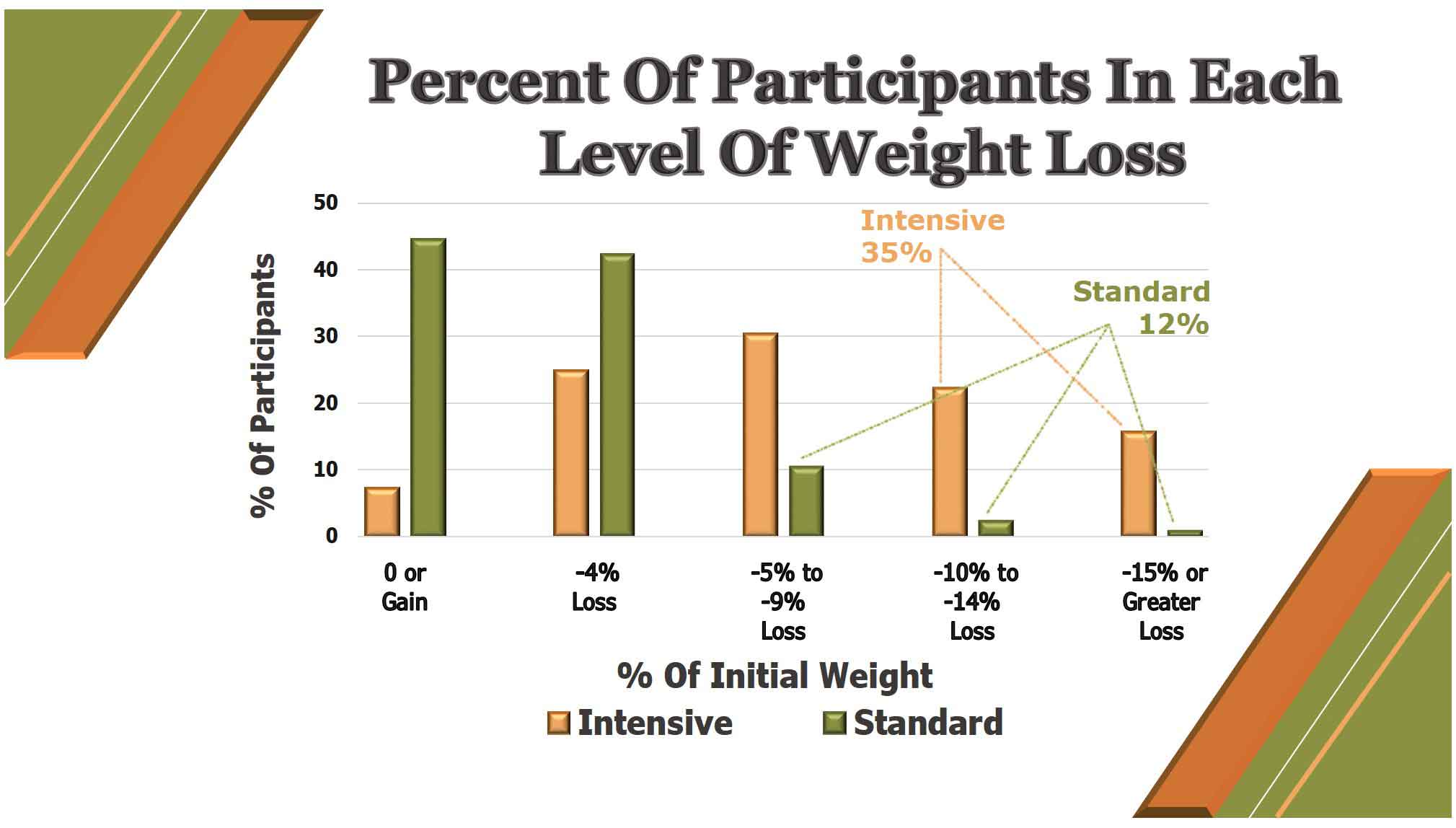
Even in the Standard Program, after 8 years, 12% lost more than -5% of their weight and a few subjects lost more than -10%.
In the Intensive Program, after 8 years, 35% lost more than -10% and half of those lost more than -15%.
Effectiveness losing weight reduced the incidence of heart attack, stroke and other cardiovascular disease. As a result most subjects in both groups who lost less than -10% body weight had no protection.
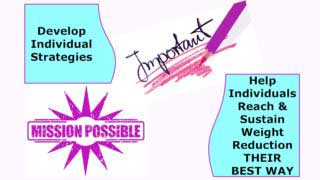 Note that subjects who reduced weight at least -10% for one year were 20% less likely to suffer disease, disability and death. Those who maintained more than -10% weight reduction for at least 8 years were less than half as likely to suffer heart attack, stroke or other cardiovascular disease.
Note that subjects who reduced weight at least -10% for one year were 20% less likely to suffer disease, disability and death. Those who maintained more than -10% weight reduction for at least 8 years were less than half as likely to suffer heart attack, stroke or other cardiovascular disease.
The lesson from this very important clinical study is to develop individual strategies. Individuals should be helped to reach and sustain weight reduction their own best way.
Automatic brain processes control what we do every day. More than 90% of what we think, feel or do happens automatically. Without conscious thought. Non-conscious processes programmed in memory direct almost everything. Those neurocognitive programs are created by actions and functions in response to situations and events. Responses form initially to provide outcomes you want and avoid unwanted results. When responses occur over and over again, dozens or hundreds of times, they become automatic. Familiar stimuli followed by routine responses. What happened last time will likely happen next time.
What you want to do may change. Information, situations and outcomes may change. Something you learn, think, feel or imagine can change your mind. So you want to do something different.
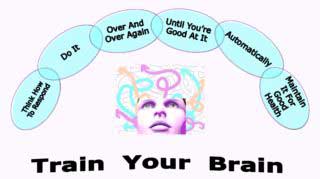 You can change what you think, feel or do. As long as you remember. If you forget to think about the change you want, the original automatic process directs the original response. For a long time you have to think about any new response for it to happen.
You can change what you think, feel or do. As long as you remember. If you forget to think about the change you want, the original automatic process directs the original response. For a long time you have to think about any new response for it to happen.
Most non-conscious, automatic processes are hard to redirect. You really don’t know how strong they are. You may not even know what happened last time they functioned.
This is not like revising computer software. Just recoding. You have to change what you do and see what happens. A small change might become automatic right away. More complex changes have to be repeated many times before they become automatic. Even then, in years to come, the automatic responses may come back.
Start by stating your Ultimate Goal. Say it out loud. Write it down. Do you want to stay healthy?
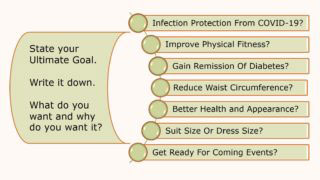 Describe and study what you want and why you want it. Especially figure out good features you expect to gain.
Describe and study what you want and why you want it. Especially figure out good features you expect to gain.
But also review bad things you want to escape.
To reach the Ultimate Goal, there are at least 4 types of Action to include in your Action Plan.
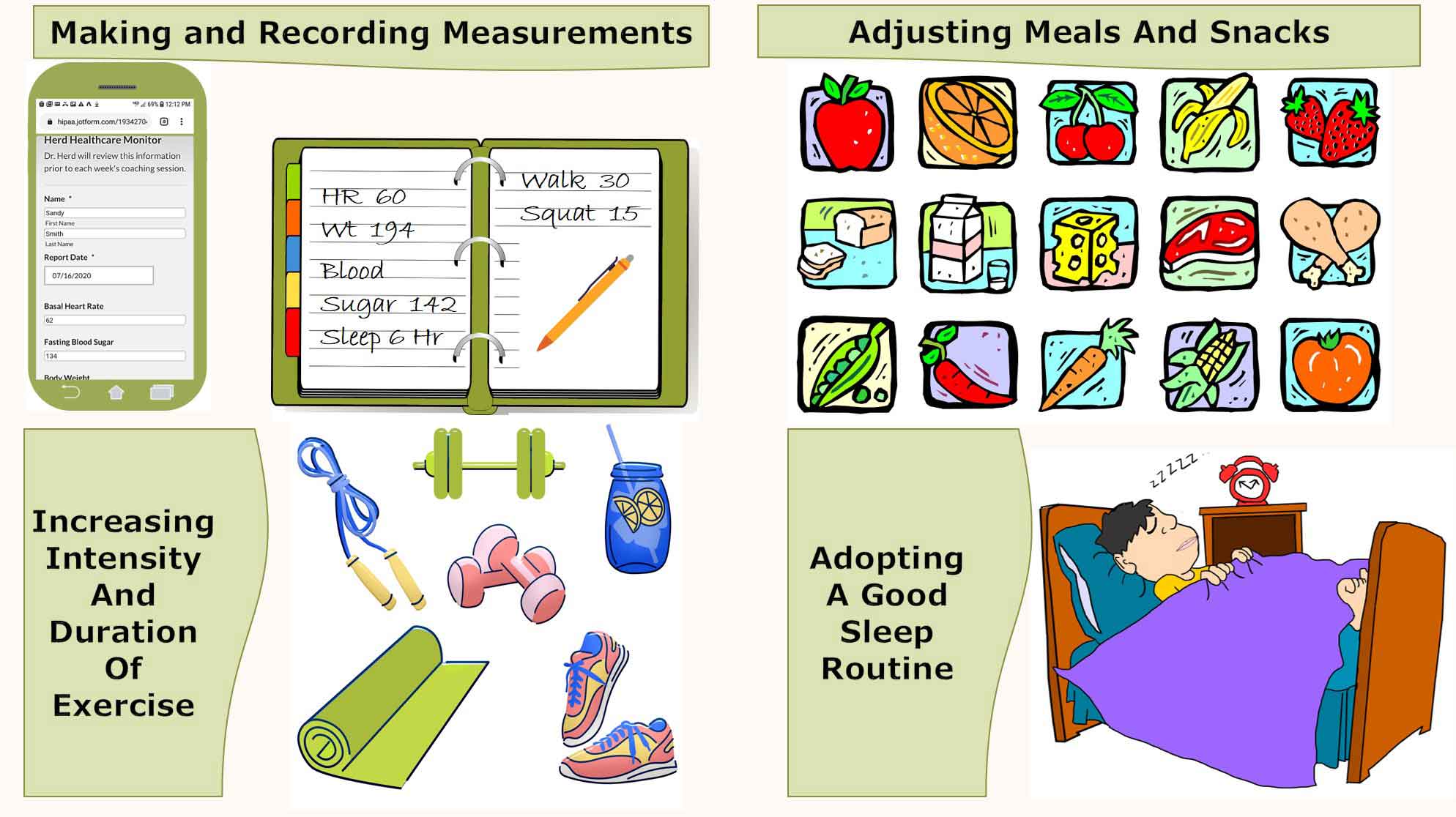
Next, define SMART Objectives within each category of Action.
Objectives should be:
Specific: described in 2 or 3 words in relation to Ultimate Goal,
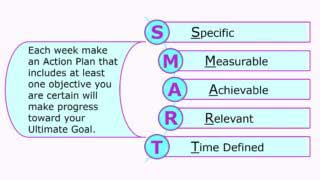 Measurable: numbers recorded at Baseline and compared each week,
Measurable: numbers recorded at Baseline and compared each week,
Achievable: within reach using current skills, situation and time,
Relevant: contribute progress towards Ultimate Goal,
Time Defined: date, schedule and duration specified.
Start with an Action Plan For The First Week
Make your best possible estimate for improvements in health practice you are sure you can make. Even though you don’t really know what you will be able to do. Just saying you’ll do something doesn’t mean you’ll actually do it. Non-conscious automatic processes may interfere. You may have been too ambitious. Or something might come up to interfere with your plans.
Setting objectives requires balancing how difficult something is to accomplish and how often you’ll try. The ideal plan includes daily repetition at least 5 days a week. Keep testing to find what you can do 5 days a week. Then keep increasing intensity and difficulty as you go along.
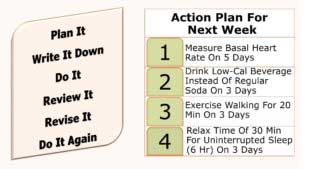 The first Action Plan should include at least measuring and recording Basal Heart Rate on 5 days. Other actions might be projected for fewer days.
The first Action Plan should include at least measuring and recording Basal Heart Rate on 5 days. Other actions might be projected for fewer days.
Review and Analyze Results at the end of each week. Exactly. More, less or the same. Figure out what really happened. It’s important to be successful. Use results from each week to make Action Plans that accurately predict what will get done next week.
Assess and State Progress that was made.
Were objectives reached? Take satisfaction!
Were objectives exceeded? More days? More effort? More accomplished? Upgrade projections!
Were objectives not met? Revise the Action Plan for next week.
Identify Issues that need special attention. What gets in the way of objectives? What can be done about it?
Review: Results, Progress, Issues
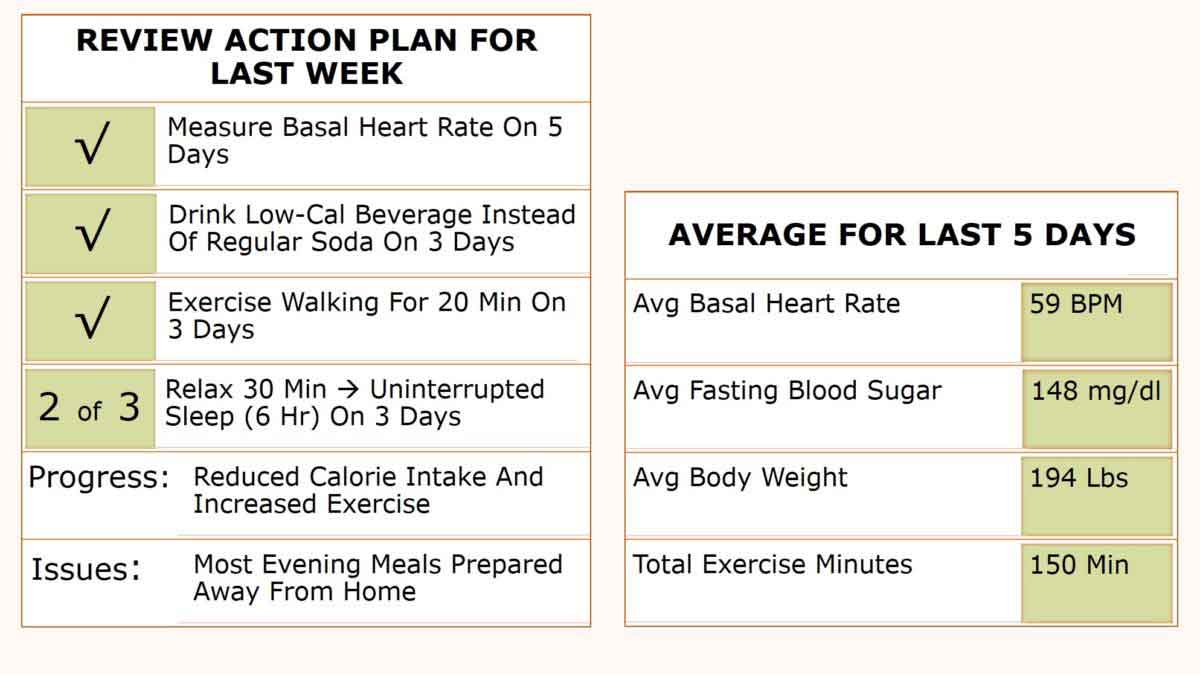
Display progress week-by-week.
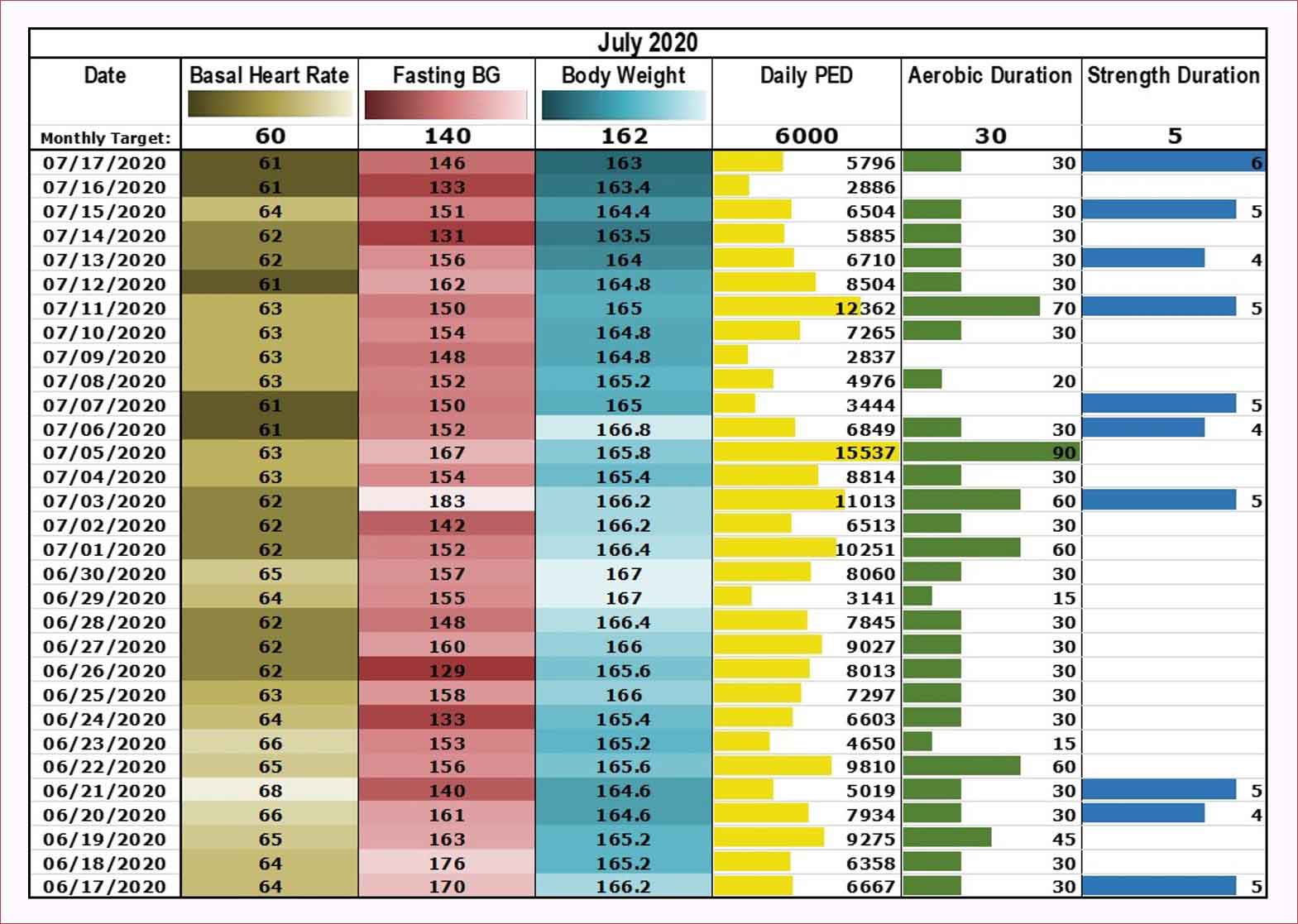
Make a table or a graph of measurements showing improvements in Basal Heart Rate, Fasting Blood Sugar and Body Weight.
Show how measurements progress over time. Use color scale formatting to show relationships between measurements.
Progress in Endurance and Strength Exercise also can be displayed.
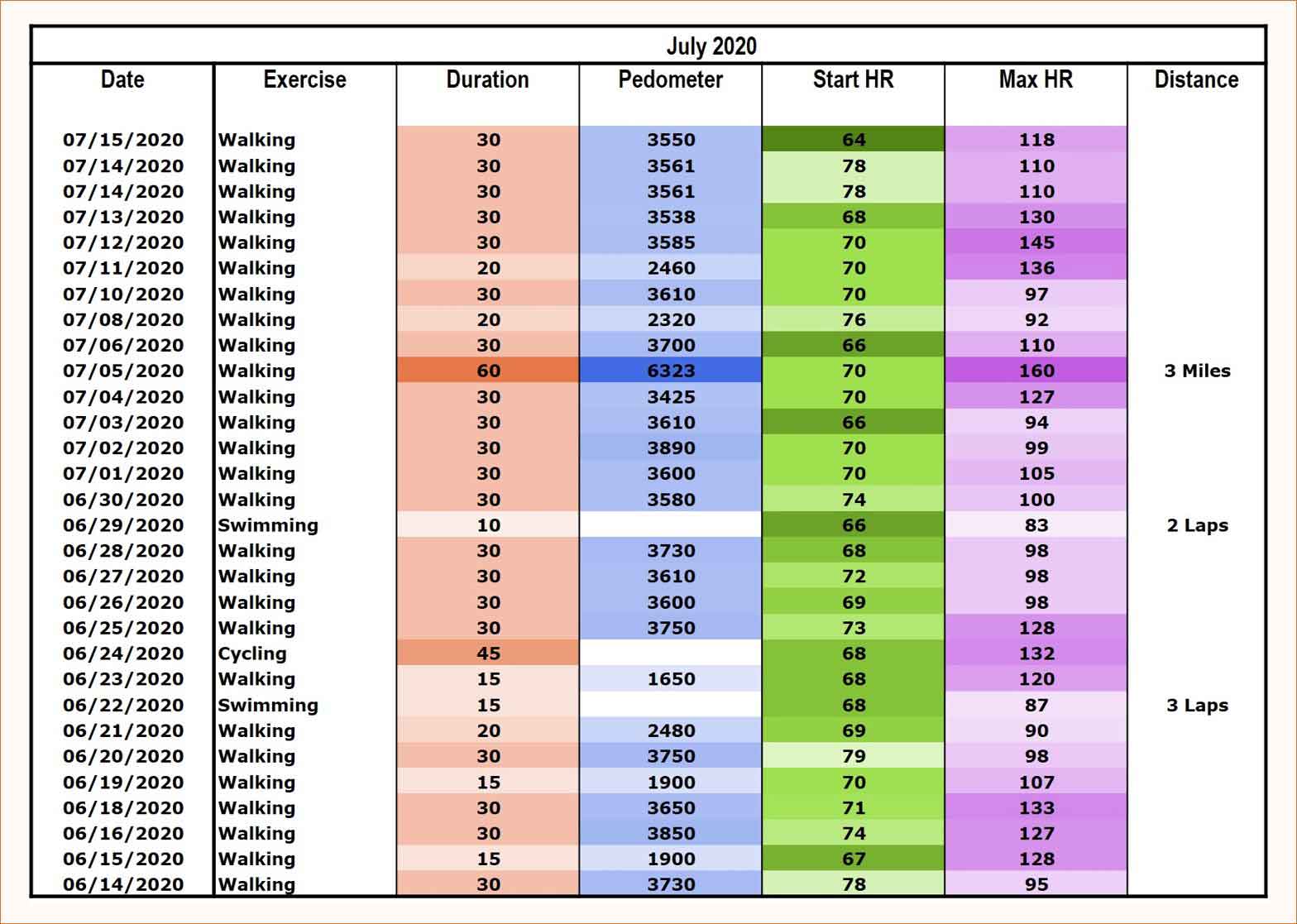
Day-by-day improvements in Endurance and Strength are hard to appreciate.
About all you notice is what makes you stiff and sore.
When the type of exercise, its intensity and duration are displayed with color formatting, you can see how all the effort gradually increases Endurance and Strength.
We all appreciate benefits of good health and we’re all concerned about hazards of poor health. Education about overweight, obesity and type 2 diabetes tells us the hazards of disease and disability. Demonstration of good daily living shows us how to improve our health.
We all have different experience from one another. Non-conscious control of what we think, feel and do happens automatically. We can change what we usually do by conscious direction. What we think about it and what we feel about it is different for all of us.
To start we need conscious, personal motivation to succeed. We test and learn what we can do to improve our health. We do that over and over again until that health practice becomes automatic.
The combination of success, satisfaction, repetition and maintenance are all powerful determinants of good health and long life.
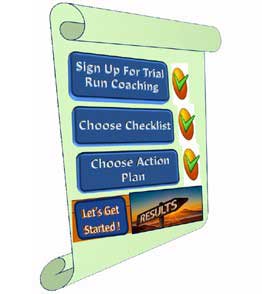 We are pleased to share our blog articles with you, and we are always interested to hear from our readers. Our website address is: www.herdhealthcare.com
We are pleased to share our blog articles with you, and we are always interested to hear from our readers. Our website address is: www.herdhealthcare.com




